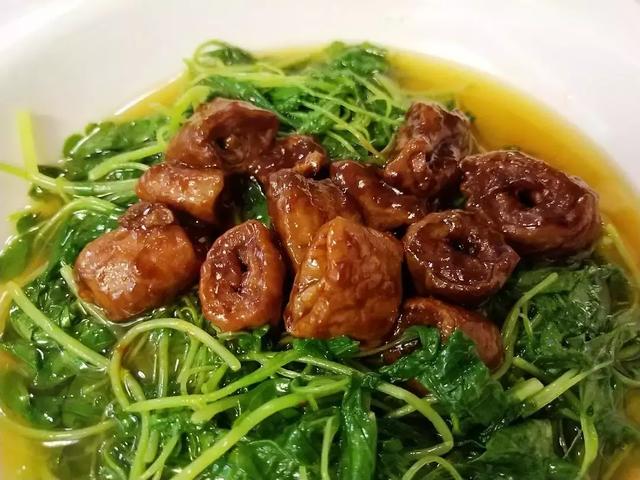古代窗户样式(中国古建筑门窗文化)
关于【古代窗户样式】:古代窗户样式,今天涌涌小编给您分享一下,如果对您有所帮助别忘了关注本站哦。
1、古代窗户样式
1、直棂窗:以竖向直棂为主,排列犹如栅栏,是一种比较古老的窗式。直棂窗因具体做法不同还可细分出不同种类,除了常见的竖向直棂条形式,还有破子棂窗和一马三箭窗等变形。
2、槛窗:是一种形制较高级的窗子,是一种隔扇窗,窗扇上下有转轴,可以向里和向外开关。
3、支摘窗:亦称和合窗,是一种可以支起、摘下的窗子,明清以来在普通住宅中常用。其内亦有一层,上下均固定,但上部可依天气变化用纱、用纸糊饰,下部安装玻璃,以利室内采光。
4、漏窗:外观为不封闭的空窗,窗洞内装饰着各种漏空图案,透过漏窗可隐约看到窗外景物。
5、空窗:在园林建筑中空窗是指局部或全部镂空的窗子。
6、花窗:在窗洞内雕或塑出花草树木鸟兽或其他优美图案的墙壁上的窗子,装饰性与艺术性更强。
7、长窗:以内心仔处为装饰重点,花纹有直棂、平棂、方格、井口、书条、十字、回纹、藤纹等。
2、中国古建筑门窗文化
本期编辑/上海雅舍辛乙堂
Yashe Studio
———————————
门可出入于尘世;窗能游思于仙境。中国古代门窗于传统建筑艺术中熠熠生辉,其深沉而含蓄的文化内涵让人醉心其间,流连忘返。无论雕梁画栋,抑或曲栏朱槛,都化作一声声历史的轻喃,悄然拂过我们的耳畔……
The door can enter and leave the world; Window can travel in Wonderland. Ancient Chinese doors and windows shine in traditional architectural art, and its deep and implicit cultural connotation makes people intoxicated and linger.
No matter the carved beams and painted buildings, or the qulan and Zhu sills, they all turn into a whisper of history, quietly brushing our ears......
在古人眼里,门窗有如天人之际的一道帷幕,集富贵之相,儒雅之风于一身,既具有丰富的文化内涵,又雕工精美,给人以很高的视觉享受,还有一定的收藏价值和高度的装饰实用性。门窗的装饰也体现了房屋主人迥异的审美情趣、身份地位和财富象征。
In the eyes of the ancients, doors and windows are like a curtain between heaven and man, integrating wealth and elegance, with rich cultural connotation, exquisite carving, high visual enjoyment, certain collection value and high decorative practicality.
The decoration of doors and windows also reflects the different aesthetic tastes, status and wealth symbols of the house owners.
雕刻与花纹
古代雕刻手法上也颇为繁复,门、窗、隔断每个部件都饰以不同的图案,最为典型的是吉语类的福(蝙蝠)、禄(梅花鹿)、寿(麒麟)、喜(喜鹊),牡丹、兰花等正宗传统的汉族雕刻图案。
The ancient carving techniques are also quite complicated. Each part of the door, window and partition is decorated with different patterns. The most typical ones are the authentic traditional Han carving patterns of Fu (BAT), Lu (sika deer), Shou (kylin), Xi (magpie), peony, orchid and so on.
门窗形式多样,丰富多彩,宫殿、坛庙门窗的精致华丽,文人园林建筑门窗的清秀雅致,乡土建筑门窗的生动活泼,使原来单纯实用的门窗成了建筑装饰的重点,成了表现人文内涵的重要部位,构成为一种特殊的木文化。
Doors and windows are diverse and colorful. The delicate and gorgeous doors and windows of palaces and temples, the elegant doors and windows of literati garden buildings, and constitute a special wood culture.
门空与漏窗
门空在江南一带称之为“地穴”,其形式独蕴风采,只在墙上开洞,却不装门扉。门空的边框一般满嵌清水磨砖,并且饰以各种形式的线脚,称为“门景”。
Menkong is called "underground cave" in Jiangnan area, and its form is unique. It only makes holes in the wall, but does not install doors. The frame of the door is generally full of polished bricks, and decorated with various forms of moldings, which is called "door view".
门空在中式设计建筑中常设在厅堂廊轩的两侧,亦可接廊,成为廊轩的起始,也常因其辟于露天或半露天的墙垣上,成为一处诗意雅致的取框景,而使清雅偶得,妙趣自来。
In Chinese style design buildings, the door space is permanently on both sides of the hall porch, which can also be connected to the porch, becoming the beginning of the porch. It often becomes a poetic and elegant frame view because it is opened on the open-air or semi open-air wall, which makes it elegant and interesting.
漏窗是中式传统建筑中窗牖(yǒu)的一种独特表现形式,其在墙上开出类似窗户的洞口,但并不安装窗扇的装饰方式。如洞口不设遮拦,而是取墙外之景以门空的方法建造,则为窗空;如果将洞口用砖、瓦片等物做成透空的图案或花纹,则为漏窗。
Leaky window is a window in traditional Chinese Architecture (Y ǒ u) A unique form of expression, which opens a hole similar to a window on the wall, but does not install a window sash decoration.
漏窗之美,宛如墙上的立体画,引人入胜。试想,什么也不做,只是依在窗前感受窗外竹影婆娑、流光明灭滴翠、花香呼之欲出,小廊曲折,绿意透窗而来,无限意境让人该是怎样的砰然心动呢。
The beauty of the window leakage is like a three-dimensional picture on the wall, which is fascinating. Just think, do nothing, just lean in front of the window and feel the bamboo shadow whirling, the streamer disappearing, the emerald, and the fragrance of flowers coming out.
屋门与墙门
最典型的屋门莫过于南方官宦大户的宅门,俗称“将军门”。将军门的门扇为框档门,门体较大,用材颇多,在近乎刻板的对称中,如将军驾临般飒飒风姿,透露出威严凝重之气。
The most typical house door is the house door of a large official family in the south, commonly known as the "general door". The door leaf of the general's door is a frame door. The door is large and made of a lot of materials.
墙门指开墙为门,并在门之上用砖砌成枋,或者加斗棋、牌科作为装饰。如在门的顶部覆盖瓦石,门侧修筑墙垛,便是“门楼”;墙门与“门楼”相似,不同之处在于它并非独立高出墙垣,而是完全依附墙体修筑而成。
The wall door refers to opening the wall as a door, and building a brace with bricks on the door, or adding chess and cards as decoration. If the top of the door is covered with tiles and stones, and the wall pier is built on the side of the door, it is the "gatehouse";
The wall door is similar to the "gatehouse", except that it is not independently higher than the wall, but completely attached to the wall.
长窗与半窗
长窗,又称“隔扇”,通长而落地,装于上槛与下槛之间。长窗由上夹宕板、窗芯、边条、中夹宕板、大夹宕板、下夹宕板六部分组成,所有的夹宕板都由木板填实,木板雕刻成各式图样。
The long window, also known as "partition", is long and landing, and is installed between the upper sill and the lower sill. The long window is composed of six parts: upper clamp plate, window core, side strip, middle clamp plate, large clamp plate and lower clamp plate.
每扇夹堂和裙板上都精雕细刻有各式各样的图案,形成阴阳起伏的断面,雕饰的图案风格机趣活泼、柔顺秀丽,花纹多饰如意、静物、花草等,一草一木都有比较深刻的含意。
Each clip hall and skirt board are carefully carved with a variety of patterns, forming a cross-p of yin and Yang ups and downs. The carved pattern style is interesting, lively, supple and beautiful...... all of which have profound implications.
半窗又称短窗,小巧精雅,因其长度是长窗的半截,故而得名。半窗一般装在厢房和书斋等地方,底部多半为矮墙,窗形极其细致精巧,紧靠着窗外的植物。
The half window, also known as the short window, is small and elegant. It is named because its length is half of the long window. The half window is usually installed in the wing room, study and other places, and the bottom is mostly a low wall.
本文关键词:古建窗户样式图片大全,古式窗户,古代窗户样式图形简笔画,古代窗户样式图形,古代窗户样式。这就是关于《古代窗户样式(中国古建筑门窗文化)》的所有内容,希望对您能有所帮助!更多的知识请继续关注《犇涌向乾》百科知识网站:http://www.029ztxx.com!
版权声明: 本站仅提供信息存储空间服务,旨在传递更多信息,不拥有所有权,不承担相关法律责任,不代表本网赞同其观点和对其真实性负责。如因作品内容、版权和其它问题需要同本网联系的,请发送邮件至 举报,一经查实,本站将立刻删除。
